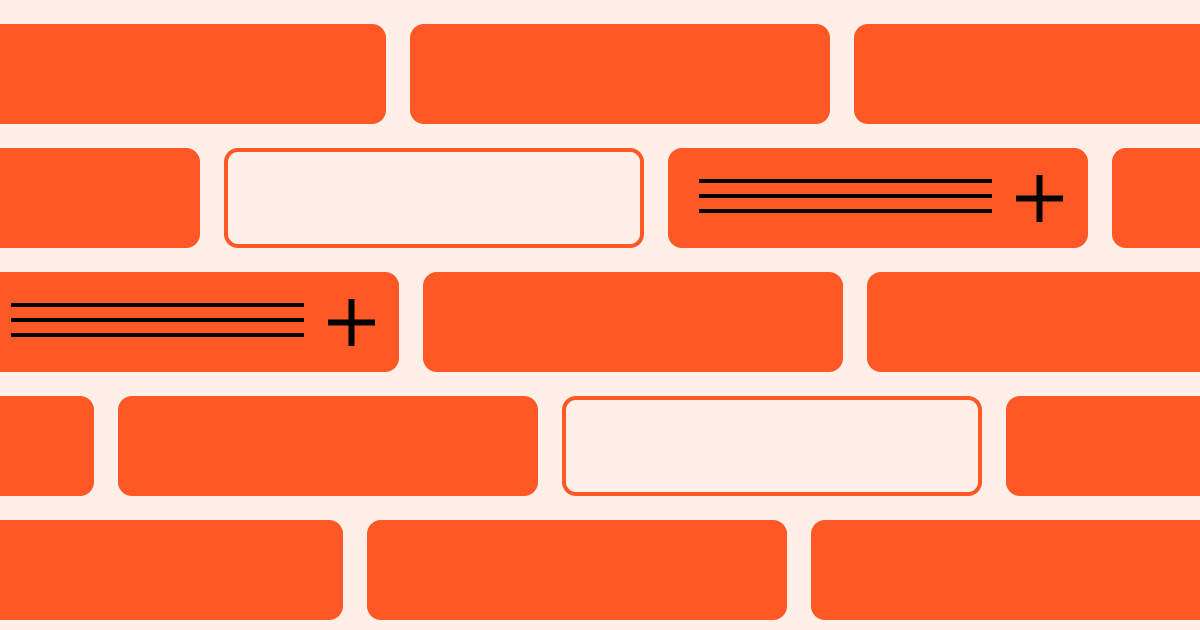Module 3: How to Negotiate The Sale of Your Business

After years of blood and sweat you put into building your business, the last thing you want to hear is that a buyer wants to purchase your business for way less than you value it. This is why you must learn how to negotiate the sale of your business.
In this module, you’ll learn how to walk out of the negotiation with a deal where everyone’s a winner (even when you sell your business for less).
Preparing for Negotiation
There’s a right and wrong way to prepare for the sale of your startup.
Wrong way? Walking into the virtual negotiation room with a ballpark price because a similar business recently sold for that amount.
The right way? Finding your business’s value before going to the negotiation table. This is why we began this course with a module on how to determine your business valuation. You can find it here.
In a nutshell, some factors we advise sellers to consider when preparing for the sale of their businesses include their finances, assets (like email subscribers, IP, marketing content, etc.), and growth potential.
Once you’ve determined all the above and are satisfied with your business’s value, you can move on to the next step, which is setting up your ideal sale scenario. However, if you’re not cool with the value, you’ll need to find ways to increase your business’s value.
Prepare for rigorous due diligence
Once you’ve piqued a buyer’s interest, you enter the due diligence rut. Buyers will zero in on your financial statements, so the cleaner and more transparent they are, the faster and more favorably the deal will proceed. Organise your data room into clear folders for financial statements, legal agreements, statements of purpose (SOPs), and technical documentation, etc.
Setting your target sale price
Once you’ve got all the documents sorted, the next item to crunch is your ideal sale price. Keep in mind that there’s a high possibility you’ll close the deal at a price less than this set price. For this reason, you’re going to set two prices: a selling price and a walkaway price point.
When creating your listing on the Microns marketplace, you’ll be required to enter your listing price. You’ll provide proof for your chosen figure with verifiable data, such as screenshots of revenue from Stripe, the number of customers, and subscribers, etc.
After setting your ideal price point, you also need to pick a minimum sale price (walkaway price) that you can’t go lower than: a price that you won’t be willing to continue negotiations. You won’t input this while documenting your listing on our marketplace. Just keep this price in mind so you can negotiate when your business generates interest from buyers.
The Negotiation Process
Understand the buyer’s motivation
There are different types of buyers with varying motivations. Some buyers will want to purchase your business to aid their business expansion and offer more robust services to their clients or customers. Others may be interested in the financial potential of your business. Others may want to have a side project to build their entrepreneurial skills.
Prioritizing your financials with someone who just wants to expand their business’s offerings may not be a great negotiation tactic. This is why it’s important to understand who your potential buyer is.
Find out why they want to buy your business and what their plans are for the future. Then employ a targeted negotiation tactic to increase your chances of walking away with a good deal.
Build a relationship with the buyer
Once you know your potential buyer’s motive, now’s the time to present your business’s metrics to them in an appealing way. Provide evidence of every metric you share on our marketplace, whether it’s sales or traffic, or other marketing metrics, and point out the appropriate selling points.
Also, try to be resourceful. Typically, we advise sellers to offer a free 1-month post-service support to buyers. Building a good relationship with the buyer now can almost guarantee a good working relationship after the sale. Plus, they may want to retain you on a paid basis after that. You could also offer insights on strategies they could apply in growing the business, as well as the things you failed at (so they wouldn’t waste their time pursuing such strategies).
Another thing you could do is sweeten the deal if the buyer feels your business isn’t worth the asking price. For example, you could add some assets you didn’t add previously, or you could offer free consultations. Also, you could offer to take some assets off the deal if the buyer is unable to match your asking price.
Time is everything
Time is of the essence. That’s why the buying cycle on our marketplace is typically 30 days. So always set deadlines for each negotiation stage. We recommend you always follow up with prospective buyers as they’re busy and some of them may go on vacation. If the buyer is taking too long to respond, you may need to walk away from the deal.
Closing The Deal
Once you’ve agreed on a price with the buyer, review the transaction details ensure both parties set clear expectations.
Accepting offers
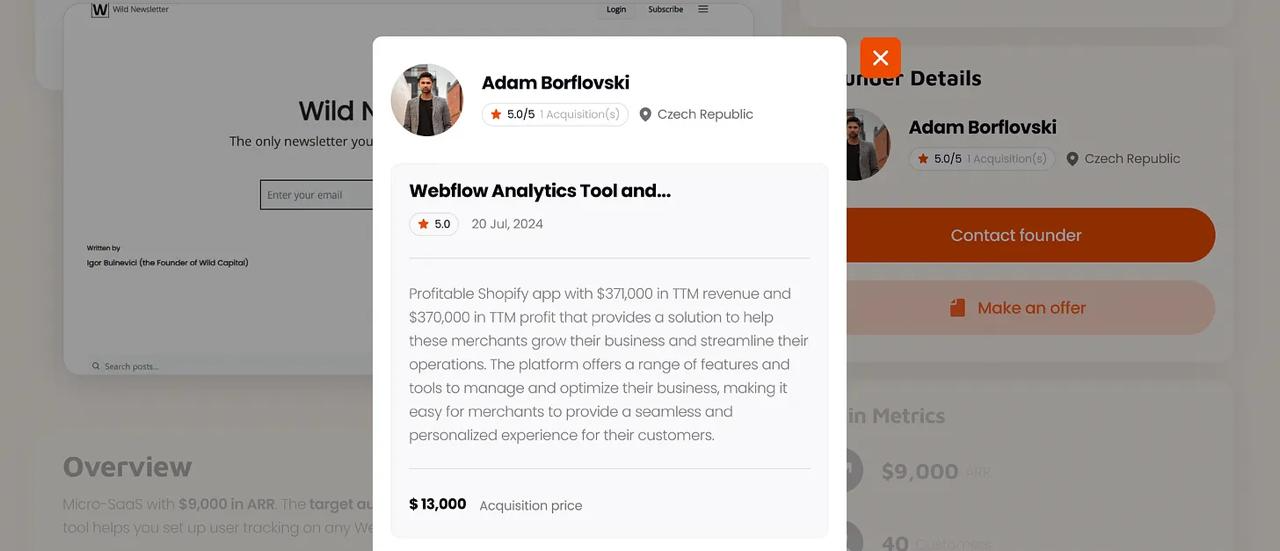
For your safety, we advise that you request that the buyer submits their offers and close the acquisition through our secure platform’s Offers platform.
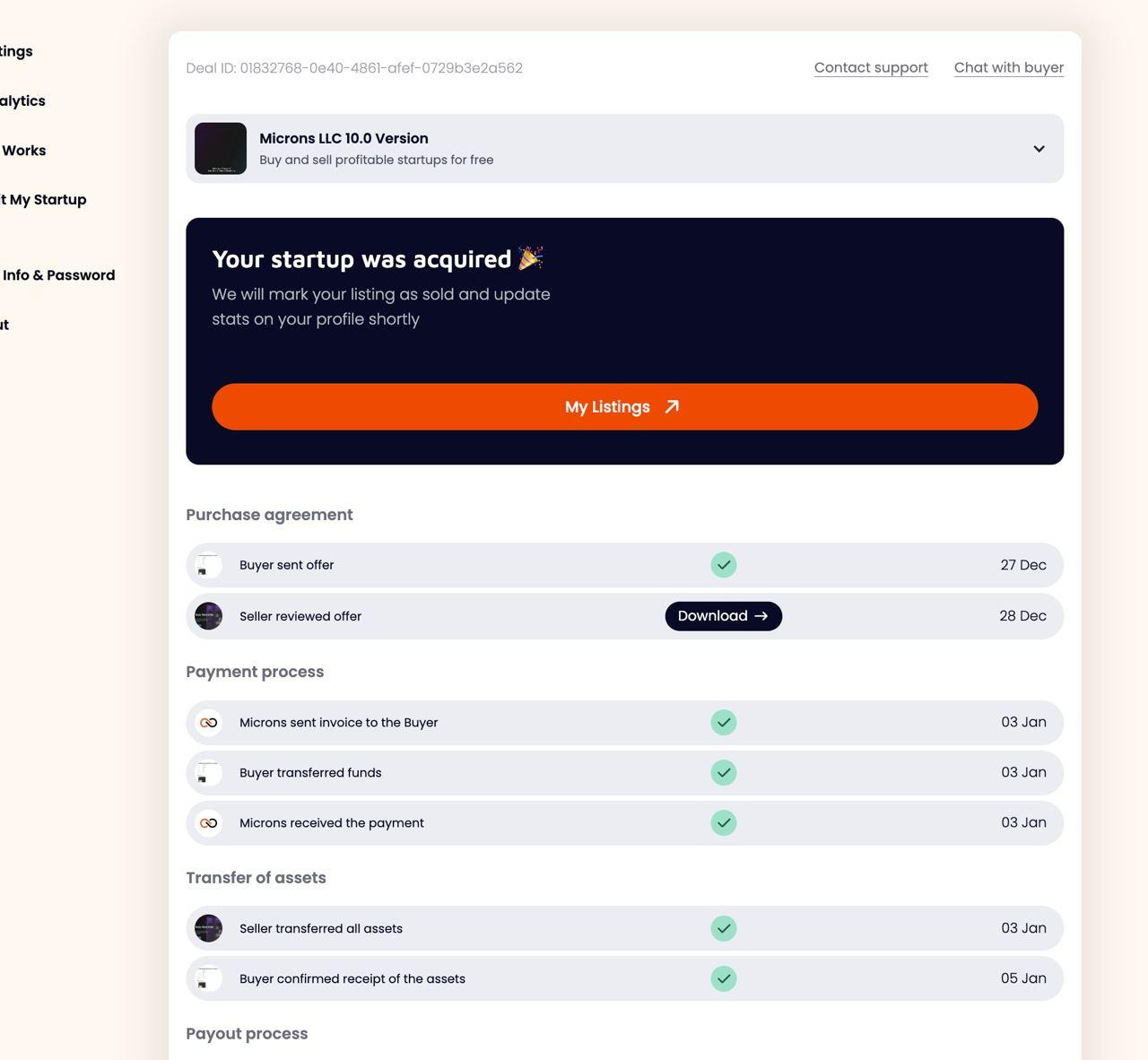
Your dedicated Offers dashboard lets you track the transaction status and download agreements and invoices. You’ll also get dedicated support to answer your questions or send your requests regarding the deal on your behalf. Also, should any conflicts arise, we’ll be on hand to resolve them. Our Offers interface also automatically generates asset purchase agreement APA documents for both you and the buyer and charges the buyer.
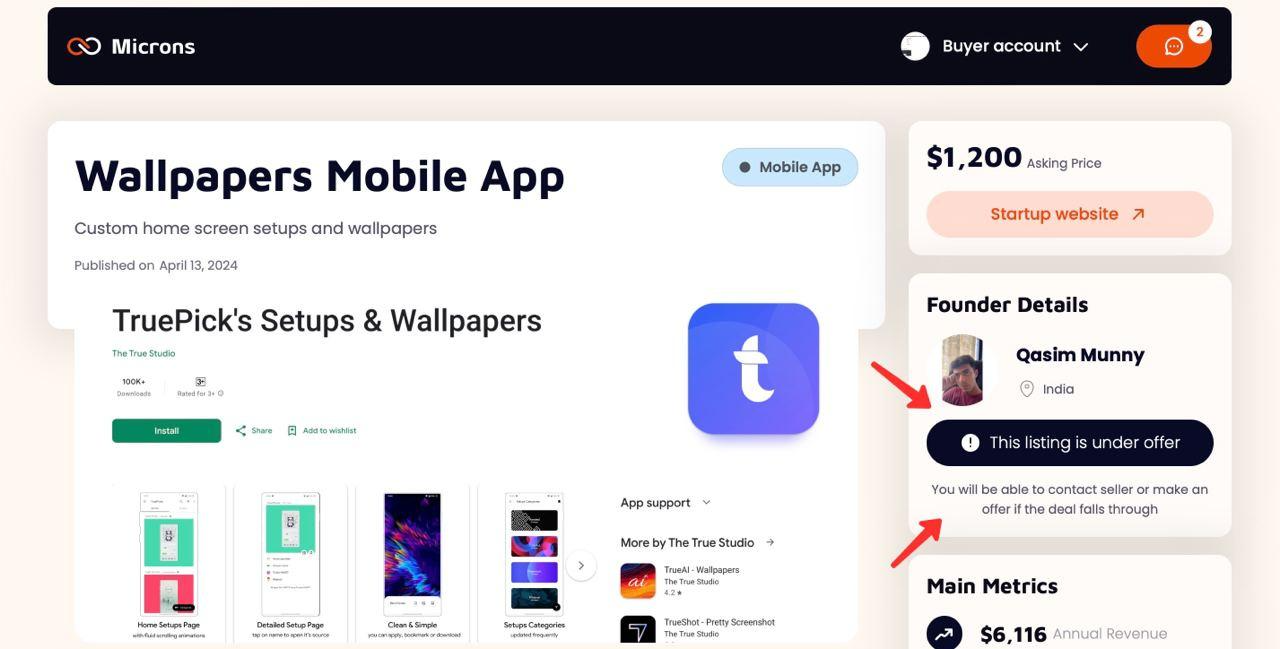
When you accept an offer, we’ll lock the project so other buyers can’t contact you or make counteroffers. This way, the first prospect who makes an offer stands a higher chance of closing the deal. Besides this, we label startups that are under offer. If the deal falls through, the offer will be released, and the project will again become available to other prospects.
Communicating with prospects
Another interesting feature of Offers is its secure, integrated chat interface for seamless communication and asset transfer.
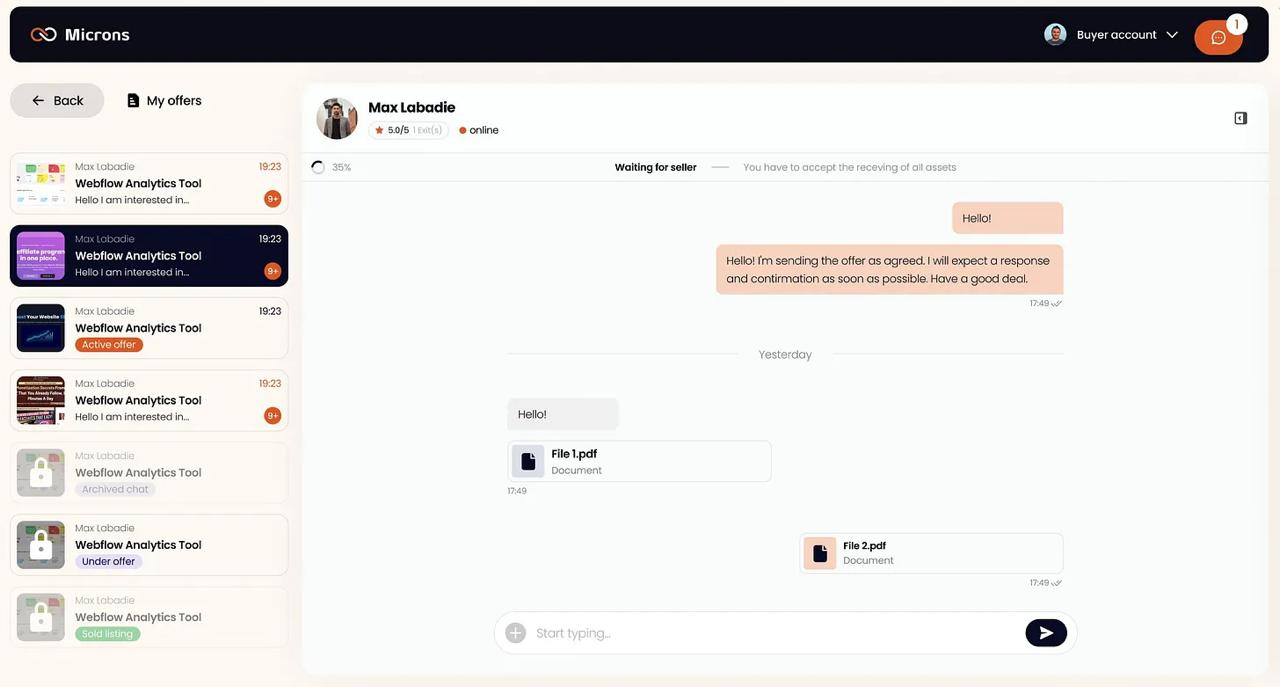
You can send messages in real time and pin the offer status to the top. On an occasion where an important action needs to be taken, like making a payment or transferring assets, we’ll send a system message with an action button, so you don’t need to leave the chat at all. It works smoothly and makes the acquisition process feel as comfortable as chatting.
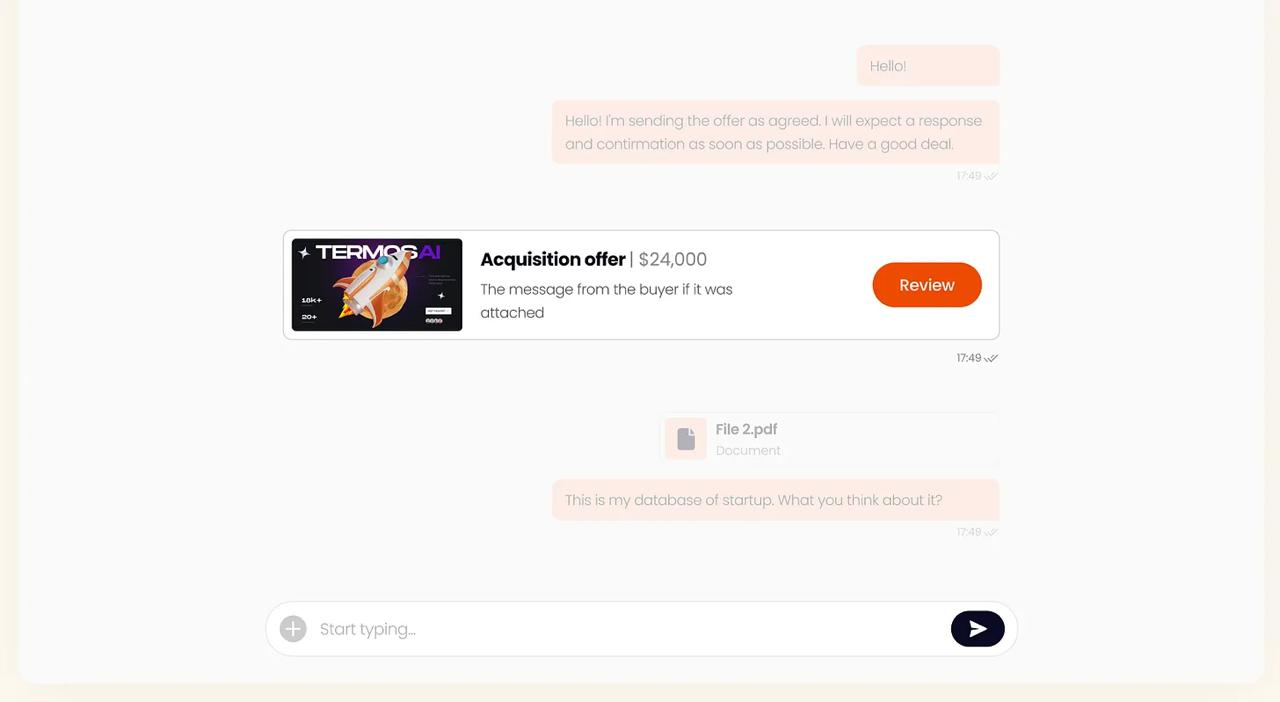
At the end of every transaction, both buyers and sellers can leave feedback about Microns and rate each other; the feedback is public and will be displayed on the seller/buyer profiles.
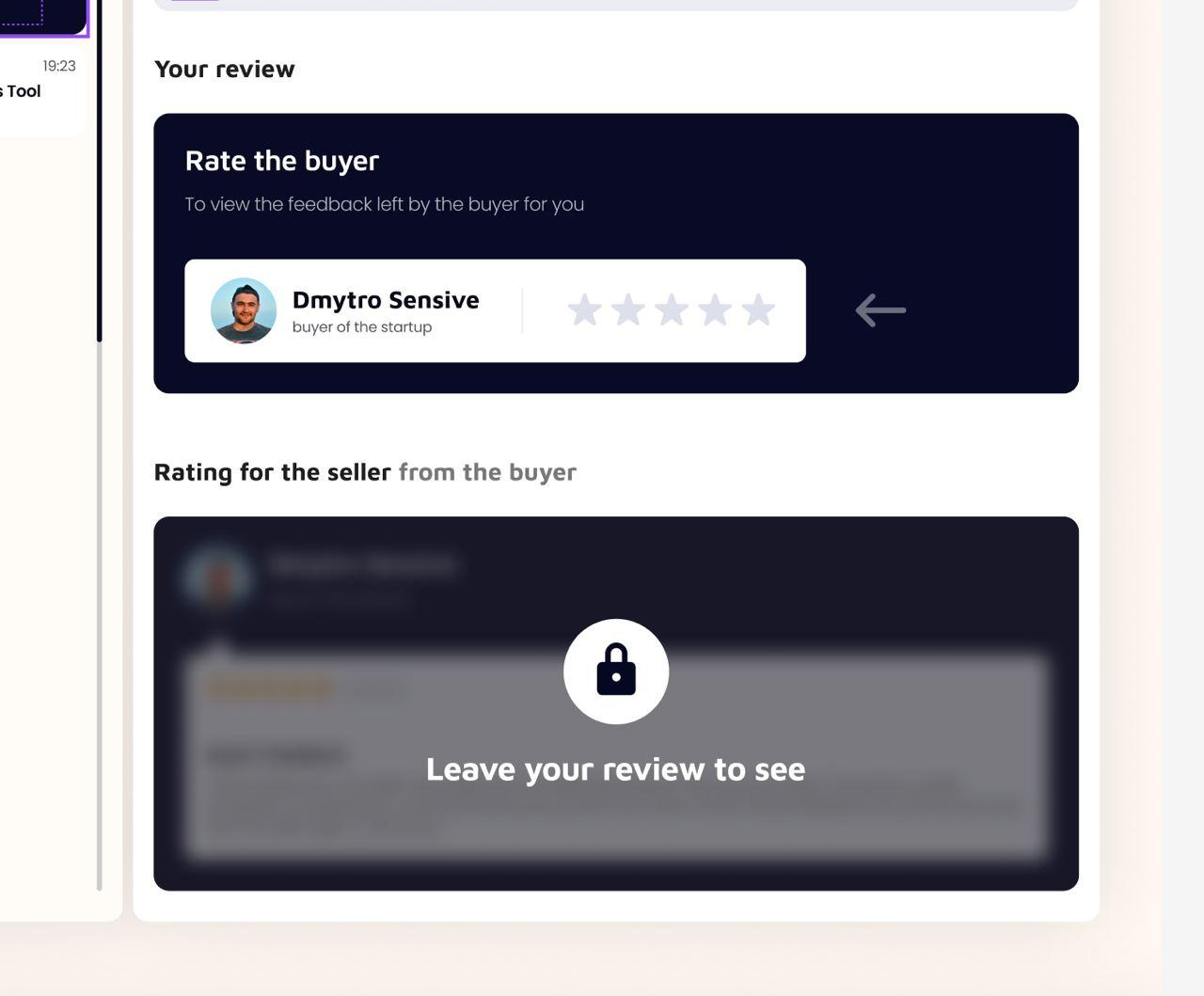
We’ve added all these features to ensure you receive your payment fast and securely as opposed to being at an increased risk of getting scammed if you close the deal outside our platform. Our Terms state that buyers and sellers must use our transfer service, aka Offers, to complete transactions securely. You can learn more here.
This service is free for buyers to make offers. However, we charge sellers a small fee of between 6 to 10% depending on the deal size.
Next up are the legal considerations you need to navigate when selling your business.




